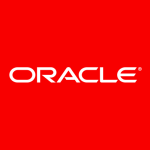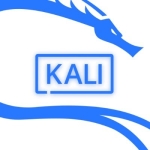What is our primary use case?
I'm a consultant, and our customers use this product. I work for a company that works with this product. I mostly work with Red Hat Enterprise Linux. We do designs of infrastructure projects from the bottom to the top. We install Red Hat Enterprise Linux at the system level. Based on the application requirements, we design, configure, and update the systems.
Our customers use it as a basic operating system on which they deploy applications. They have enterprise application servers such as Tomcat or custom applications that need an operating system.
I've worked with it both on-prem and on the cloud. It depends on the client. On the cloud, the cloud providers are both AWS and Azure. This also depends on the clients, but it's mostly AWS and Azure.
How has it helped my organization?
Mostly, our customers use Red Hat Enterprise Linux because of its performance and security. They want to have an operating system that is supported and secure because they don't want to spend too much time supporting a Linux version that is not enterprise. They want an enterprise product that is secure so that they don't have to think about it all the time.
It isn't difficult for our customers to move workloads between the cloud and the data center using Red Hat Enterprise Linux. The integration from on-prem to the cloud is quite easy because the operating system is the same. The operating system works the same in both places, so it's easy.
It has helped our customers avoid cloud vendor lock-in because they didn't need to buy a specific subscription from a cloud vendor or use a specific operating system from a cloud vendor and change the code of their application in relation to that. It's important to have a solution that avoids cloud vendor lock-in because they can move freely from one system to another system without any issues.
It has saved costs for our customers because it's a stable operating system, and they have no problem with security, patching, and so on. The operating system and the environment are stable. It works everywhere without any issues, so the development of the applications is not impacted by the system. Red Hat Enterprise Linux is easy to use and well-supported.
What is most valuable?
Support is most valuable. If a customer has a problem with a feature or a bug, we can open a support case for that, and the issue is resolved or taken care of. That's the main benefit of the product.
The resiliency of Red Hat Enterprise Linux is quite good.
What needs improvement?
Some low-level aspects, such as the file system support, can be improved. There are a lot of file systems that are supported by other Linux distributions. Red Hat Enterprise Linux is a little behind those. For example, BTRFS is a file system that is not supported by Red Hat.
Some of our customers use the image builder tool to build the golden image to deploy to the cloud or to build a custom image to deploy on the cloud or on-prem. The golden image created by the image builder tool is good. It's the golden image. It works without any issues. However, the build process of image builder could be improved because it's not up to the standard or at par with other tools that build the golden image. However, it's quite useful and quite easy to use. It's not a big problem, but it could be improved. There is not a lot of information about how to use it. The process is not as well documented as the other parts of Red Hat Enterprise Linux.
The knowledge base offered by Red Hat is very good, but it could be improved and made much easier to search. Currently, the best way to find an article in the knowledge base is by using Google Search. By searching on Google, we can find the right knowledge base article, but it isn't easy to find information by using the search option within the knowledge base.
For how long have I used the solution?
I've been working with Red Hat Enterprise Linux for the last four years.
What do I think about the stability of the solution?
It's very stable. I didn't have any issues with the stability of the product most of the time.
What do I think about the scalability of the solution?
Its scalability is very good. It scales very well in the right infrastructure.
How are customer service and support?
Their support is good. It's one of the best support in the IT world for a product because you always get a response for every bug or issue. Overall, I'd rate their support a nine out of ten.
How would you rate customer service and support?
Which solution did I use previously and why did I switch?
How was the initial setup?
It's straightforward. It's pretty easy to deploy Red Hat Enterprise Linux. It can be difficult based on the workflow of the client, but overall, it's pretty straightforward to deploy on the cloud environment because all cloud providers support the deployment of Red Hat Enterprise Linux. The golden image of Red Hat Enterprise Linux is compatible with every cloud provider. There is a feature in the cloud console for joining the Red Hat Enterprise Linux account with the cloud account, so you can create cloud images from the console. It's pretty easy from that.
What was our ROI?
Our customers have seen an ROI because after they choose Red Hat Enterprise Linux, they stay with the product and renew the subscription. It's a good investment for the IT department.
What's my experience with pricing, setup cost, and licensing?
Its licensing is pretty confusing. There are a lot of subscriptions, and it isn't always clear which subscription is the best, but with their support, it's easy to find the right one.
Our customers sometimes buy it directly from the cloud provider, but most of the time, they have a hybrid infrastructure, so they already have some kind of subscription, and they use that subscription on the cloud.
Which other solutions did I evaluate?
We evaluated other options, but other options don't provide the support and stability that come with Red Hat Enterprise Linux.
What other advice do I have?
To someone who is looking at open source cloud-based operating systems for Linux instead of Red Hat Enterprise Linux, I would say that if they are looking for an enterprise OS on a cloud environment and they want to have some stability and security, Red Hat is the perfect match for that.
Overall, I'd rate Red Hat Enterprise Linux a nine out of ten.
Disclosure: PeerSpot contacted the reviewer to collect the review and to validate authenticity. The reviewer was referred by the vendor, but the review is not subject to editing or approval by the vendor. The reviewer's company has a business relationship with this vendor other than being a customer: Partner















